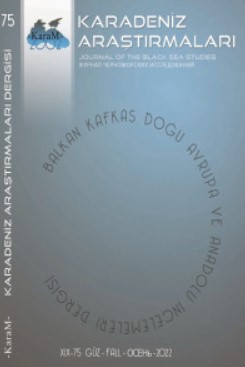OSMANLI YENİÇAĞI’NDA TOPRAĞA DAYALI ASKERÎ VE EKONOMİK YAPININ TEMSİLCİLERİ OLARAK ZÂİMLER: AMASYA ÖRNEĞİ (1700-1740)
ZÂIMS AS THE REPRESENTATIVES OF THE SOIL-BASED MILITARY AND ECONOMIC STRUCTURE IN THE OTTOMAN NEW AGE: THE CASE OF AMASYA (1700-1740)
Author(s): Zafer KarademirSubject(s): National Economy, Economic history, Military history, Government/Political systems, Military policy, 18th Century, The Ottoman Empire
Published by: Karadeniz Araştırmaları Merkezi
Keywords: Amasya; New Age; Zâims; Economy; Soil; Army;
Summary/Abstract: Ottoman historiography has a modern branch of study is growing leaps and bounds, but still has a long way to go before reaching maturity. One area it needs to focus on is the Ottoman timar system, namely the Ottoman “zeâmet, ” or "middle class,” and the who it was comprised of. The zaims were some of the most active actors in this system – which also happened to form the foundation of the Ottoman economy and military structure, and was welcomed by the viziers. Some attempted to gain financial and political influence by increasing their territorial holdings over earning and losing zeâmet. Others succeeded or failed to gain local influence. Alas, few have examined either topic in any length. This article will study of the representatives of rural and urban zaims in the Turkish province [then “sanjak”] of Amasya between and 1700 and 1740. We have looked at Tapu Tahrir, Muhimme, and Şeriyye Defters, retail documents obtained from the General Directorate of State Archives of the Republic of Turkey, and the domestic and foreign research on the subject. Eighty one (81) zeamet records reveal that a significant part of the zaims owned lands in the Amasya, and that they were state officials. What we can infer from that is that it central government used them as part of a broader "controlled growth" policy.
Journal: Karadeniz Araştırmaları
- Issue Year: 2022
- Issue No: 75
- Page Range: 699-721
- Page Count: 23
- Language: Turkish

